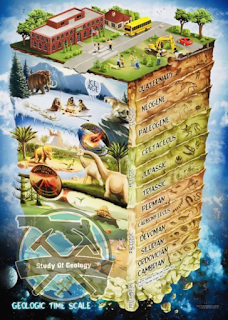VOLCANIC ACTIVITY
Volcanic activity ranges from the emission of gases, non-explosive lava emissions to extremely violent explosive bursts that may last many hours.
WHAT IS A VOLCANO?
A volcano is a spot in Earth's crust where molten rock, volcanic ash and certain types of gases escape from an underground chamber. Magma is the name for that molten rock when it's below ground. Scientists call it lava once that liquid rock erupts from the ground – and may start flowing across Earth's surface. It's still "lava" even after it's cooled and solidified.
WHERE VOLCANOES TAKE PLACE
Volcanoes take place at destructive plate boundaries and constructive plate boundaries. 1,500 active volcanoes exist across our planet, according to scientists at the U.S. Geological Survey (USGS). About 500 volcanoes have erupted since humans have been keeping records. Of all volcanoes that have erupted in the past 10,000 years, 10% reside in the United States. Most of them exist in Alaska (Aleutian Island chain), in Hawaii and in the Cascade Range of the Pacific Northwest.
WHERE DO THEY FORM
Volcanoes can form on land or below the sea. Earth's biggest volcano lies submerged a mile below the ocean's surface. Certain spots on our planet's surface are especially susceptible to volcano formation. Most volcanoes form at or near the edges (or boundaries) of Earth's tectonic plates. Their movement is driven largely by the circulation of the scalding, liquid rock in Earth's mantle. That mantle is thousands of kilometers thick. It lies between our planet's outer crust and its molten outer core.
CREATING A NEW VOLCANO
The edge of one tectonic plate may begin sliding beneath a neighboring one. This process is known as subduction. The downward-moving plate carries rock back toward the mantle, where temperatures and pressures are very high. This disappearing, water-filled rock melts easily. Because the liquid rock is lighter than the surrounding material, it will try to float back up toward Earth's surface. When it finds a weak spot, it breaks through. This creates a new volcano.
TYPES OF VOLCANOES
The two main types of volcano are:-
1 Cone-shaped volcano
2 Shield volcano.
CONE-SHAPE VOLCANOES
A cone-shaped volcano forms because the lava and ash move slowly and hardens quickly due to its thick composition. Any lava or ash which follows will form on the old flow, producing a cone-shaped volcano over time. Cone-shaped volcanoes occur at destructive plate boundaries.
TWO TYPES OF CONE-SHAPE VOLCANOES
There are two types of cone-shaped volcanoes.
Ash and cinder cones.
These cones are relatively small. Very little lava flows out of the steep-sided cone. Instead, fragments of lava exploding out of it, solidifying in mid-air.
Examples: Mt Pelee in Martinique, Vesuvius in Italy.
Composite cones.
The lava is acid in nature and is very viscous (sticky and slow-moving). Lava builds up to produce a steep-sided cone. It is common for the vent of this type of volcano to become blocked. Pressure builds up and some times the side of the cone is blown apart, as in the case of Mount St. Helens in the USA.
SHIELD VOLCANOES
A shield volcano is shallow in shape. These volcanoes have more runny lava (called basic lava) which flows relatively slowly down the long gentle sloping sides of the volcano. These volcanoes often erupt gently for months or even years. Shield volcanoes occur at constructive plate boundaries.
Example: Volcanic island of Iceland, Hawaiian Island volcanoes such as Mauna Loa.






Comments
Post a Comment